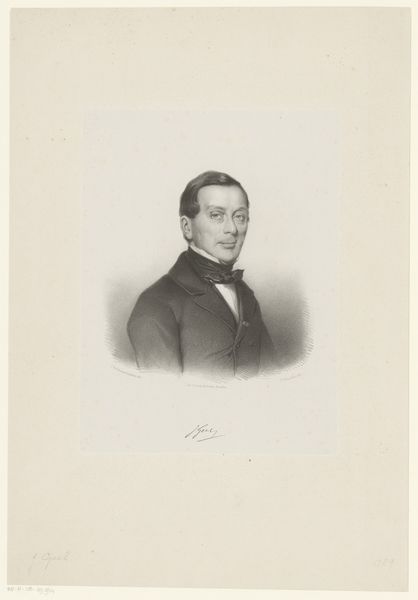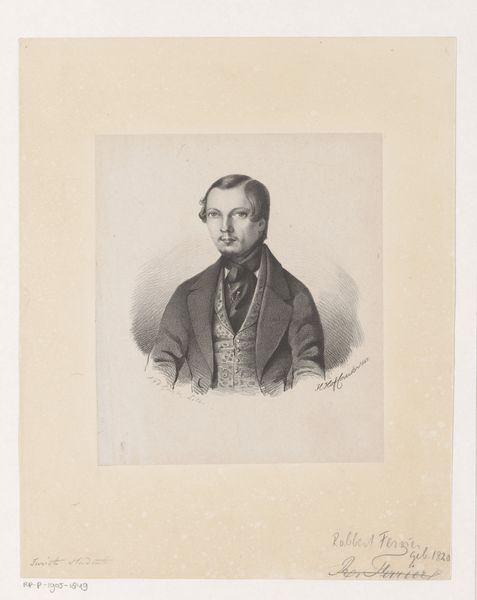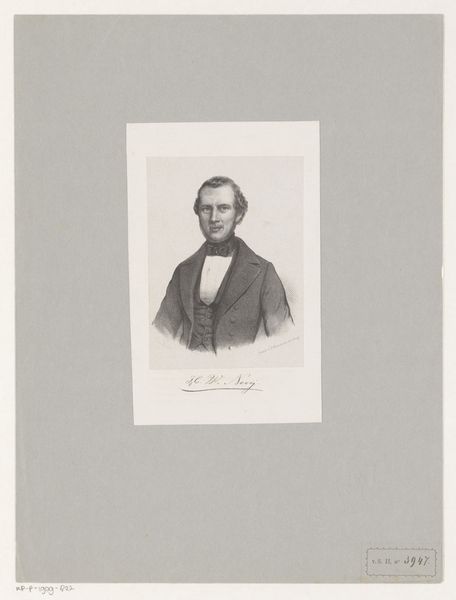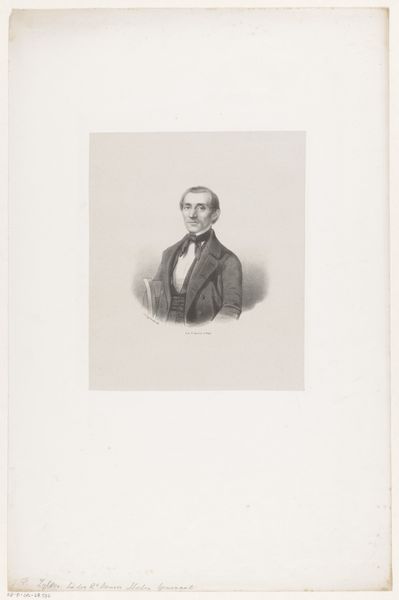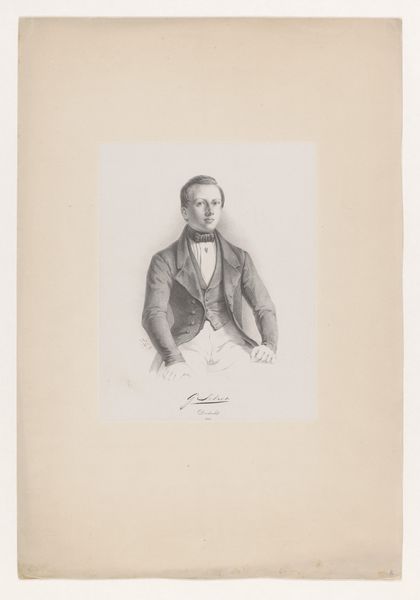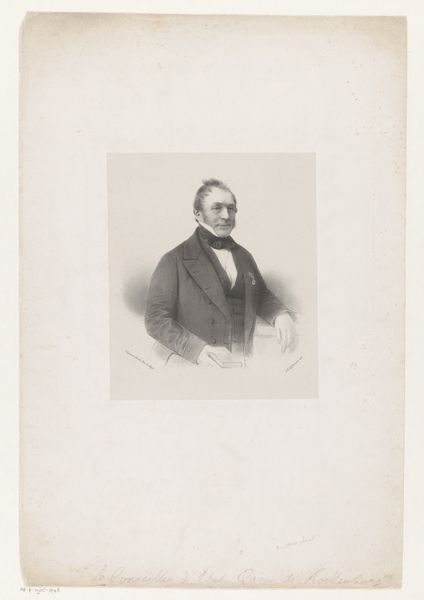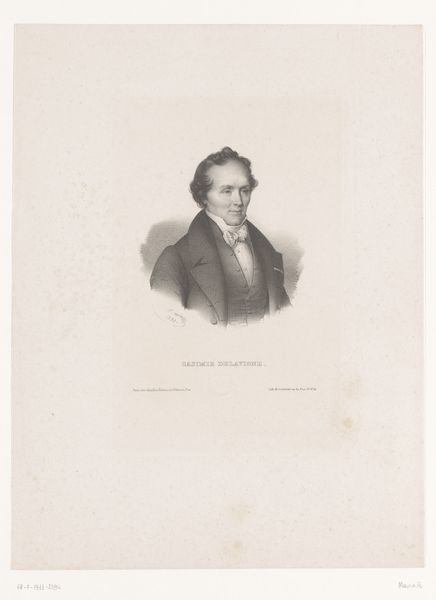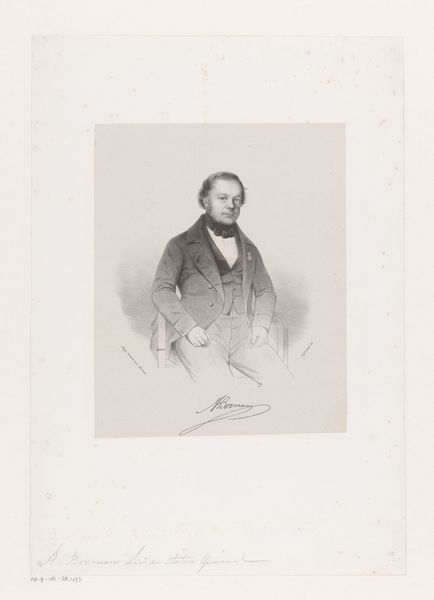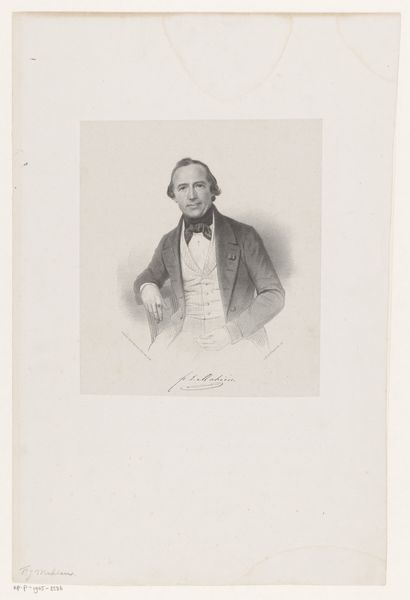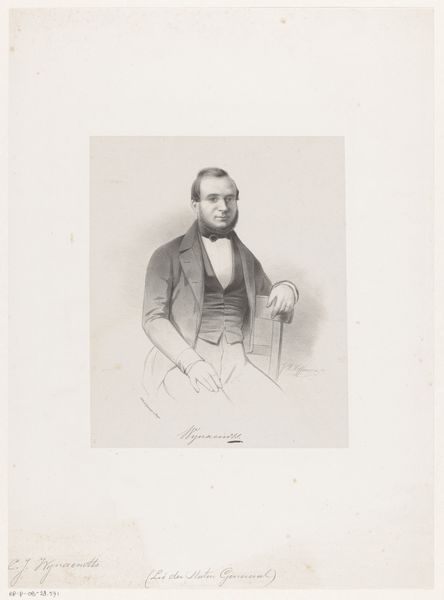
drawing, pencil, graphite
#
portrait
#
pencil drawn
#
drawing
#
pencil drawing
#
pencil
#
graphite
#
academic-art
#
realism
Dimensions: height 370 mm, width 270 mm
Copyright: Rijks Museum: Open Domain
Curator: There’s a certain… stillness to this image, wouldn't you agree? A contemplative air. Editor: It's undeniably reserved. The portrait we're looking at depicts Jacobus Arnoldus Mutsaers, captured in graphite and pencil by Johan Hendrik Hoffmeister sometime between 1843 and 1863. He's a man very much of his time. Curator: A respectable gentleman of means, for sure. The drawing, with all those soft gradients, gives him such an approachable air. Almost… vulnerable. What’s your reading? Editor: Vulnerability maybe, but also the power dynamics inherent in portraiture of that era. The meticulous detail – the careful rendering of his suit, even the single eyeglass – suggests a deliberate construction of identity. It's a performance of status and intellect. Curator: True. All portraiture is, isn't it? Still, something in his gaze... he seems to look through you. It hints at introspection. Or perhaps Hoffmeister’s really gotten to know him. Do we know more about their relationship? Editor: Hoffmeister was an important name within Dutch art in the 19th-century. This portrait presents a chance to view the visual codes employed to reinforce notions of masculinity and authority at the time. Notice the formal attire, the controlled expression, the hint of a medal? These all communicate very specific messages about Mutsaers's position in society. Curator: Messages carefully curated, of course. Although, when you see the graphite so artfully feathered into light, creating these luminous effects…you have to wonder, did Hoffmeister find something genuinely noble within the man, something beyond mere social position? Or do you feel that idea romanticizes it? Editor: Well, to ignore the societal framework within which art is created, and to center this discussion on only a binary choice, risks obscuring more nuanced discussions about the reality of individuals who both actively perform roles and feel emotion. We might consider what it meant to occupy that particular kind of privileged position during this era. Curator: A valid point. This isn’t simply a question of revealing individual nobility but examining a network of representation that gives us today some ideas about historical Dutch identity. It's certainly more intricate than initially perceived! Editor: Absolutely. It leaves you contemplating what Hoffmeister might subtly reveal about the structures in which both he and his subject are located, beyond just recording the physical likeness of this Jacobus Arnoldus Mutsaers.
Comments
No comments
Be the first to comment and join the conversation on the ultimate creative platform.

